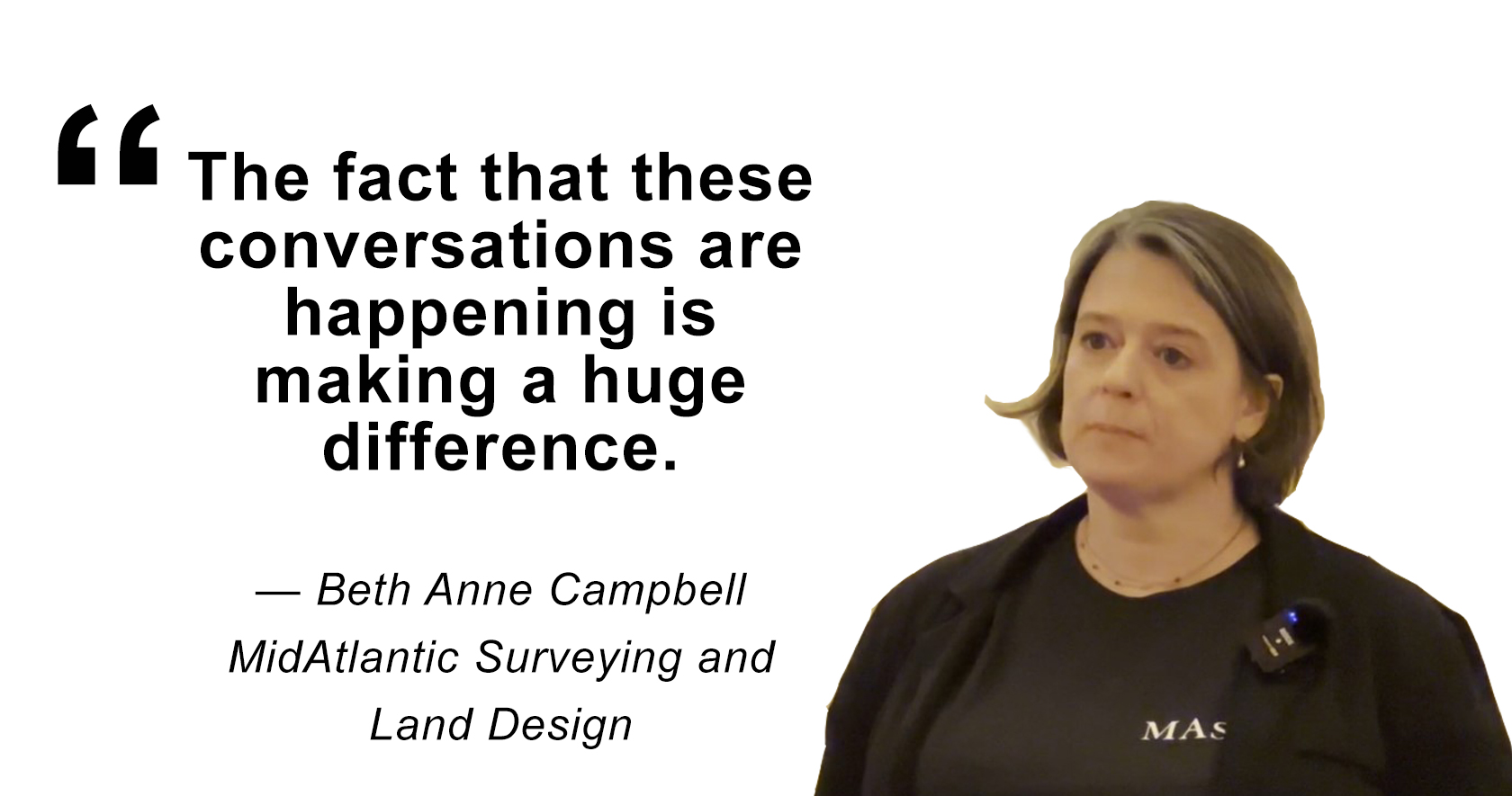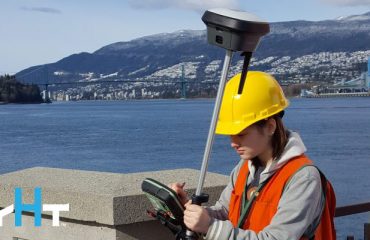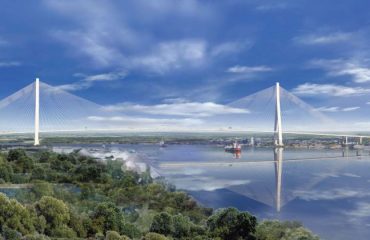Beth Anne Campbell, president of MidAtlantic Surveying and Land Design, shares her insights on the talent shortage, the Women Surveyors Summit, and the need for diversity in the surveying profession.

Ask any company owner, manager or survey director about the biggest challenges in today’s surveying profession, and staffing is likely to be at the top of the list. There simply aren’t enough people to do the work.
This is not a new problem. For the last 25 years, the surveying profession has experienced a dearth of new talent entering the profession. The global talent shortage over the last several years has exacerbated the challenge. But there has also been a noticeable lack of diversity within the profession.
“Depending on the state, between 1% and 3% of licensed land surveyors in each state are women.”
“I find that a lot of the functions I go to, I’m the only woman in the room, although that is starting to change,” says Beth Anne Campbell, president of MidAtlantic Surveying and Land Design, headquartered in Virginia Beach, VA. “You also do not see a lot of brown or black people at our events. We are trying to determine why that is happening and get into the schools and really educate anyone who might be interested in surveying.”
Advocacy Makes a Difference
By “we,” Beth Anne is referring to both the broader group of professionals who have identified the need for change as well as the nonprofit group the Future Surveyors Foundation, for which she advocates.
Founded in 2019 by Anna Rios, RPLS, owner of Aerios Geo LLC, the Future Surveyors Foundation aims to support diversity and inclusion in the profession. The foundation launched with an annual Women Surveyors Summit, which brings together professionals from around the country to learn, network and promote women in the surveying profession. Events to support other underrepresented groups are planned.
“It’s about helping bring an underrepresented community into a great profession. It is not about minimizing anybody else who’s already in it.”
The advocacy is invaluable, Beth Anne says. But it’s not as much about recruiting more women, minorities or other groups into the profession as it is about recruiting the next generation as a whole.
“Overall, land surveying has a problem with getting anyone into the field,” she says. “Nobody knows what a land surveyor does. So the fact that it’s being discussed on a national level is great. … I think the biggest thing to draw in underrepresented future employees and people from other professions is our advocacy, our education.
“The fact that our schools have become so much more aware of diversity and employment will help expose everyone” to land surveying if professionals are getting in there and sharing the message, she adds.
Technology Encourages Diversity
For Beth Anne and others in the profession, that message increasingly includes a focus on technology. “We have a laser scanner, a Leica RTC360,” she says. “And we have been able to attract a lot of people who are just fascinated by it. Our field crews love it because it makes their jobs easier in some respects. It reduces the amount of time they’re out on that hot pavement doing a topo of a parking lot. It also gives them more time to do the boundary work.
“The other thing it’s enabled us to do is attract from a very different pool of employees,” she adds. “Having the draw of technology is a great carrot that turns out to be way more than just a carrot. It enriches what we do. We are finding that we’re getting people who value both the field and the office, and they’re not just there for a paycheck.
“Data collection is, overall, a push of a button now. But interpreting the data, deciding what it means, deciding where the boundary lines fit in that data, that’s where the focus of the profession is going.”
Why Diversity and Inclusion Matter
As any seasoned surveyor knows, there’s both a science and an art to surveying. While much of the science can be taught in a classroom, the art can only be learned through experience. And it’s here where the value of diversity becomes evident. Older generations mentoring younger generations, women working alongside men, and people from every race and socioeconomic background working together to solve problems that require a surveyor’s understanding and expertise.
“Hearing other perspectives is huge.”
“As a woman in a male-dominated profession, I’ve realized the different perspective you get from working with mostly men,” says Beth Anne. “And I find that most of the time, with the men that I work with, they appreciate my perspective as much as I appreciate theirs. Hearing other perspectives is huge.
“I think one of the advantages of COVID is it made us all look around and say, where are we with our community?” she adds. “Land surveying, at the end of the day, is about community. And I think as we get more and more people into land surveying and add that diversity, the value of that just goes through the roof . …We’re going to have 60% of our profession retiring in the next 10 or 15 years. And what we’re trying to do instead of looking at it as a problem is see it as an opportunity. It’s a wonderful opportunity to bring people in.
Note: This story is based on a podcast episode recorded for HxGN Radio, which is available on iTunes, Spotify or SoundCloud.
Listen to the full podcast episode here >
To talk to one of our experts and learn more about how technology can optimize your surveying potential, please contact us.



